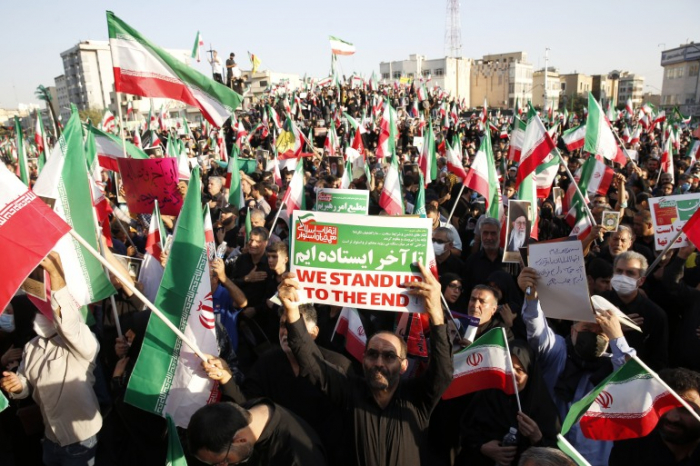He was making a promise to allow Iranians affected by state-imposed internet restrictions to use his satellite internet network operated by SpaceX. And the United States government said it would support his efforts by easing its sanctions on Iran by promoting the free use of the internet and issuing the necessary permits to make the process work.
But while bringing the internet to Iran via a satellite link is not out of the question, a set of serious challenges make it highly improbable, at least in the short term.
There have been 10 nights of protests so far, which began after a 22-year-old Kurdish woman Mahsa Amini died in the custody of Iran’s morality police after being arrested for allegedly falling foul of the country’s conservative Muslim dress code.
The authorities have not released official tallies, but protests have been recorded in most of Iran’s 31 provinces, and dozens are thought to have been killed with thousands arrested.
Senior officials, including President Ebrahim Raisi, and state media have denounced what they have called “riots” as several police officers, security forces, and members of the paramilitary Basij force have been killed, and public property damaged.
There have also been two pro-establishment rallies so far, on Friday and on Sunday, to counter the protests as authorities also blamed “terrorist” groups for trying to work towards secessionist goals.
Citing “security concerns”, authorities have introduced the tightest internet restrictions across Iran since the November 2019 protests.
What would Starlink need to work?
In addition to a subscription service, Starlink terminals – hardware that would allow the user to connect – are required to link up.
Starlink has reportedly sent more than 15,000 terminals to Ukraine, a US ally, after Russia’s invasion in February.
But Iran views the Starlink terminals as a security threat and will prevent their entry into the country.
In order for Starlink to work, thousands of Starlink terminals would need to be smuggled into Iran at a significant cost – probably in the region of a few million dollars.
The Iranian foreign ministry last week called the US’s revoking of some of its internet-related sanctions an effort towards “violating Iran’s sovereignty”. It said it would take immediate action.
Separately, Iranian officials blocked Starlink’s website the same day.
What are the potential legal challenges?
News of Starlink’s “activation” has circulated wide and far among Iranians, many of whom have pinned their hopes on the service.
But so far, the only tangible result has been hackers who published malware under the guise of software required to connect to Starlink in order to dupe users.
Starlink could potentially face legal and regulatory ramifications if it were to meaningfully advance its plans without the cooperation of the Iranian government.
Iran has had a history of legally pursuing grievances with Western powers, namely concerning the US and its wide-reaching sanctions.
It is possible that if Starlink’s plans do actually move ahead, Iran could turn to the International Telecommunication Union (ITU), the international communications regulatory body of the United Nations, or other authorities to legally protest the move.
“The issue is that a company probably can’t offer services over Iran by violating international regulations. It’s possible the Islamic Republic will file a credible complaint against the company and create problems for it,” tweeted Jadi, a prominent Iranian developer and tech blogger.
How is internet restricted in Iran right now?
When the November 2019 protests broke out across Iran following a sudden jump in fuel prices, there was a total internet shutdown for nearly a week, leaving most of the 85-million population offline.
For the first few days, local websites were down and government offices and banks were offline.
After the first week, the blanket shutdown was lifted but some restrictions continued in parts of the country where protests were still raging.
But things are different this time, as the authorities are finding different ways to restrict internet access.
Local websites and services have remained online so as not to affect the domestic economy. And some internet providers, especially private companies, have been less affected than others.
But for people using the country’s largest providers such as MCI and Irancell, using their mobiles and getting the internet at home has become more difficult.
Connectivity is restricted from approximately 4pm until after midnight, when protests are taking place. During those hours it also becomes exceedingly difficult to connect to private virtual networks (VPNs), which most Iranians use to circumvent restrictions.
WhatsApp and Instagram remain blocked throughout the country, meaning all main social media and messaging applications have now been filtered in Iran.
Maziar Motamedi is a Tehran-based journalist who covers Iran.
Read the original article on Al Jazeera.
More about:
















































